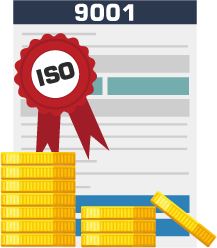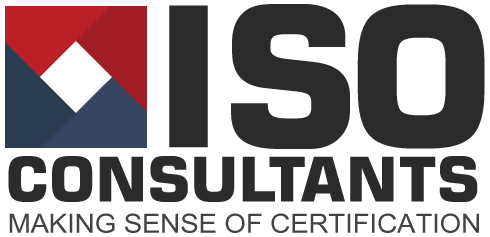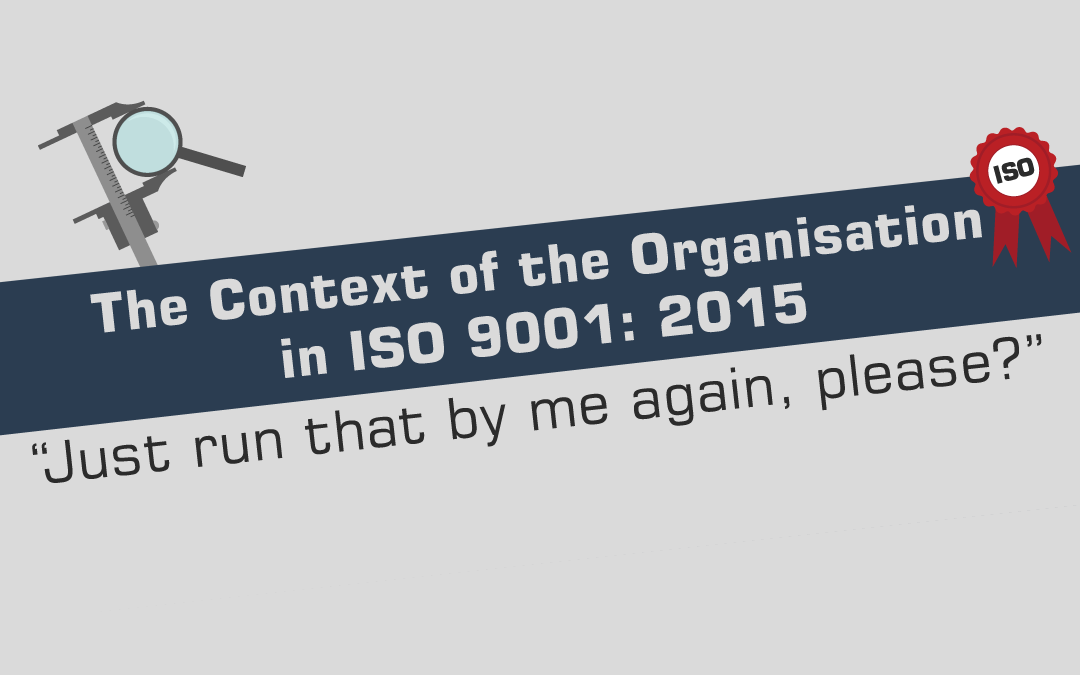If there are clauses of ISO standards that you just don’t understand, such as The Context of the Organisation in ISO 9001:2015 then please be reassured. After over 25 years in the industry, I struggle with them, too.
Here is an example:
“The organisation shall determine external and internal issues that are relevant to its purpose and its strategic direction and that affect its ability to achieve the intended result(s) of its quality management system.”
(ISO 9001, 2015, clause 4.1)
(Well, that’s cleared that up, then…)
Standards authorities frequently seem to make things deliberately difficult. Meanwhile, what’s this The Context of The Organisation in ISO 9001:2015 stuff about anyway?

Well, what the standard is trying to say is this:
It would be jolly good if your business knew what it was trying to achieve (its strategic direction). Furthermore, that somebody had then thought about the things which influence your success. Finally, they had built the Quality Management System (QMS) to take these influences into consideration. Then control them to ensure you were successful. It’s actually quite simple – what are you trying to achieve? How can you measure your progress? Now construct a well-written and relevant QMS do to help you do this?
It’s Just A Business Plan?
When I first read this in the 2015 version of the standard, I thought “well that’s silly – it just means you should have a business plan. Of course, everyone has one of them.” Two years later, after working with standards that mandate “The Context of The Organisation”, my naivety has been addressed. Ultimately, I’ve come to the realisation that nobody ever, ever seems to have a business plan. That is, unless they want to either borrow money or sell their business!

Failing To Plan. Planning To Fail
However, as my attempts to implement this standard have grown my appreciation of the opening chapters of ISO 9001:2015 has increased. Therefore, even if you do write a plan on the back of a beer mat during a lunch time chat between the senior managers, having an agreed direction for the business is a remarkably sensible idea if you want to achieve anything. Then, taking into consideration the things which will affect your success (the expectations of internal and external influences), is again a really good step if you honestly want to achieve those goals. Setting objectives and targets to check progress then seems like the obvious next step. Suddenly this isn’t just another bureaucratic waste of time. It’s not “a fictional plan to make us look good”. Maybe it just could help the business grow?

ISO Standards and Making Money? Really?
As I’m on the subject of objectives, the first one of all businesses should be to make money. The essence of a well-devised Quality Management System should be to assist in that objective. This may come as a surprise to those who thought that a QMS was all about “thou shalt not” and red tape. ISO 9001:2015 should serve the business, rather than the business serving ISO 9001:2015. So, why not think of growth related objectives, gaining new customers, improving your products or services, reducing manufacturing or service delivery costs?
ISO 9001:2015 comes on the back of a many versions of the quality management standard. These have all been heavily criticised, and maybe some haven’t been as helpful to business growth as they could have been. This industry can be guilty of over indulgence in theory when it perhaps should have been more focussed on real-world business improvement. ISO9001:2015 really moves the standard very firmly away from being about “quality” as an abstract theory. It focuses it on being a “ real-world business” standard. Surprisingly, something that could actually help you do better business.
Back To The Question – What Does “The Context of The Organisation in ISO 9001:2015” Mean?
Firstly, it means setting a plan for where your business should be going. Then considering the things which will limit your progress toward it and developing controls over those things. Finally, setting objectives and targets so you know if you are making progress. This is a common-sense approach for any business owner. In the case of ISO 9001 it’s a shame its taken 39 years to get here (from the original release of BS5750 in 1979). However, it has made it, and if properly implemented it could actually drive the growth of businesses in the way that was intended when the Thatcher government originally demanded its development.
"The Context of The Organisation in ISO 9001:2015"
There is a very good reason for this clause. However, if you’re still slightly baffled, please get in touch.


